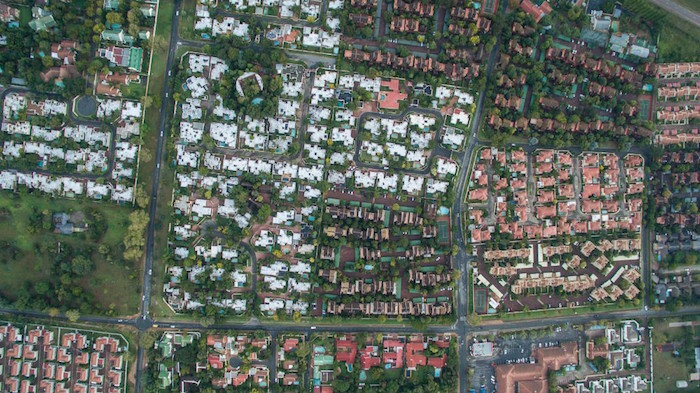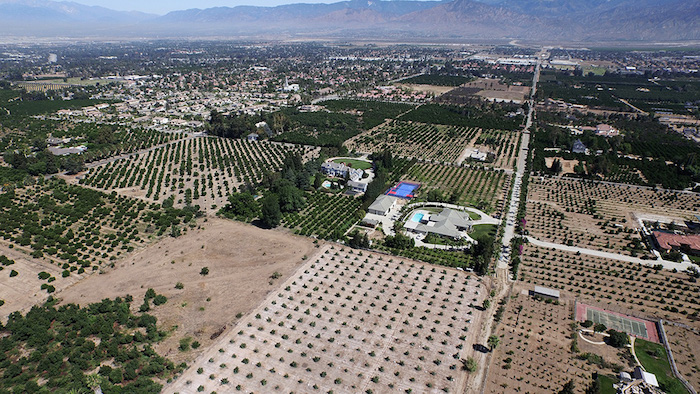
Recently, the Center for Advanced Urbanism at MIT convened a conference which drew together designers, historians and real estate management professionals. Rather than engaging in the ever-popular sport of suburb-bashing, participating speakers at “The Future of Suburbia” proposed new ideas about the ideal interaction of urban populations with their surroundings. Reports at the conference on global investigations of housing types and land use thoroughly debunked the idea that suburban living is the prerogative, or even the creation of North American. Robert Bruegmann, author of Sprawl: A Compact History and Distinguished Professor Emeritus of Art History, Architecture and Urban Planning at the University of Illinois at Chicago, presented the conference keynote address. Recently, he shared his reflections on the growing complexity of suburbs past, present and future with Victoria Solan for Design Observer.
Victoria Solan: It is now more than a decade since the publication of Sprawl: A Compact History. What surprised you about the reaction to the book and its afterlife?
Robert Bruegmann: The basic premise of my book was that sprawl was not recent or specifically American and it was not necessarily bad. I think that the most gratifying thing about watching the debate about urban futures since Sprawl came out has been how much movement there has been in some of the directions the book indicated. I wouldn’t claim that the book caused this movement. I think it was rather more of a symptom. At the time it came out, it was considered quite heretical by a large number of observers in planning circles and in academia, particularly in the social sciences. I was especially proud of the long and frantic attempt at a put-down by James Howard Kunstler in Salmagundi. That was a good indication to me that it had struck a chord. It is still considered heretical by many academics and planners but recent work on international development patterns by Shlomo Angel, the history and advocacy of Joel Kotkin and the demographic data by Wendell Cox have provided a strong corrective to the traditional anti-suburban rhetoric seen in most academic writing.
VS: You began your conference comments by cautioning the audience that you are a historian, rather than a forecaster. I found this warning intriguing. What is the relationship between the past and the future, at least as it pertains to urbanism? Must history disengage from the future?
RB: An interesting question. I think that some historians believe that what they do is to try to find out the truth about the past or at least the most unbiased possible view of what happened. Others look at history and see in it a trajectory that they feel they can trace into the future. Either of these might be a useful operating model for some people, but to me both are hopelessly naïve. Our views of history are always and necessarily very limited, are always colored by our ideas about the present and are notoriously liable to be upended by events in the future.
VS: So, for example, if I was writing a book about the postwar American suburb, how might I find my opinions about contemporary suburbs influencing my interpretation of the past?
RB: Well, even a desire to write about this topic suggests you are likely to have some views about American suburbia and these views will strongly influence your research process. If you for example, believe that it was basically bad for American cities and society and something that needs to be “reformed,” your research is likely to lead you to conclude that it was different in kind from previous suburban development, based on specific, bad American policies. You will start looking for causes that were new after World War II. That is why so many historians point to the growth in auto usage, federal highway building, federal income tax deductions or white flight.
VS: And if I like the suburbs?
RB: If you don’t believe that American postwar suburbia was inherently any more problematic than any other part of the urban realm, you are likely to find evidence, as I do, that it was really not very different in the basic dynamics or results from earlier suburbanization. You are likely to notice that the railroad promoted suburban growth in the late nineteenth and early twentieth century that was at least as important in relative terms in its impact on cities of that era as the automobile would be in postwar America. You would see that the federal income tax deduction didn’t really kick in as an important factor for most families until long after the height of the postwar suburban boom in the 1950s and 60s, and that suburbanization happened pretty much in the same way in cities where there was a major racial component and those where there was not.

VS: Interesting. So the past and the future are intertwined, whether we like it or not?
RB: The very act of creating one kind of history or another is implicitly bound up with ideas about a likely future. If you believe, for example, that postwar American suburbanization was and is unsustainable, this is inherently a prediction that it will not continue. If you don’t believe that and you believe instead that there is no inherent reason why postwar suburban developments are less sustainable than other parts of the urban world, then you see the predictions of the end of suburbia as just class-based wishful thinking. The same is true in reverse. If you believe that suburbia has been good for most of the families who moved there in the past you will probably predict that it will continue to represent an important form of development for at least the foreseeable future. I am an agnostic on these questions. I can see how new means of communication and transportation could allow the urban world to disperse even more into the suburbs and exurbs. However, I can also see how a surprisingly high percentage of the most affluent and powerful members of society live in places like the Upper East Side of New York or the 16th arrondissement of Paris. If families down the socio-economic ladder follow in their footsteps, as they often have throughout urban history, we might see an enormous surge in demand for higher density living.
VS: How does your awareness of your own tastes and preferences influence your writing and teaching?
RB: In both my writing and my teaching, I’d prefer to admit my biases right up front, say that I will try to present opposing views in a way that doesn’t distort them. Then, I will give my own version of history and admit that my version of history is necessarily completely bound up with ideas about the present and future.
VS: At the conference, I was surprised by the relatively low level of enthusiasm for new thinking about public transportation, as well as the acceptance of the inevitability of consumerism. Do you think that Western consumers tend to over-think the significance of their individual actions, perhaps expecting to mitigate environmental damage via tote bag and bicycle sales, rather than thinking more broadly about the interaction of the human species with the rest of the natural environment?
RB: Yes. Environmental damage suggests that there exists a purposeful and benign Nature outside of human existence that we are degrading. It would be like talking about beavers damaging the environment by building dams and flooding acres of grass and trees. I think it is more useful to talk about all activities as producing various planned and unplanned results and benefits and costs that are unequally distributed. I was criticizing the idea that reducing travel, using less energy, thinking small or thinking local was inherently good. Not only are some of these “solutions” problematic in themselves but they could do great harm to many of the poorest inhabitants of the world who desperately need more mobility, energy and space.
Clearly there are environmental consequences to the way we live that need to be addressed. Global warming is probably the most conspicuous of these problems today. However, fixating on remedies like limiting suburbia, pushing traditional transit instead of new transportation technologies and building at higher densities, is problematic not only because it is not clear that building at higher densities will in itself yield less energy use or greenhouse gas emissions, but it is among the most expensive possible ways to address the problem. Spending a great deal of political capital on solutions that are very expensive and disruptive and for which there is little public consensus usually does more harm than good. It is bad planning.
VS: Infinite Suburbia, the proceedings from the Future of Suburbia, will be published in the Spring of 2017 by Princeton Architectural Press. In the meantime, what kind of books on urban history should designers, urban dwellers and suburbanites read?
RB: For me, books by authors like the architectural historian Spiro Kostof or the planner and planning historian Peter Hall are really valuable because they provide a long view and dispassionate analysis of urban development. They also do something that is in short supply today. They consider urban history from the point of view of ordinary citizens. The overwhelming emphasis of historians of the built environment to date has been on city centers and on a small class of wealthy, powerful or influential individuals. This has provided a tourist-eye history of the urban world, one that has been formulated from deep exposure to the academic library, the café in front of the central-city hotel, the great monuments of high style culture. This world view is largely irrelevant to the lives of most inhabitants of urban areas past or present.
Image credits: Matthew Niederhauser and John Fitzgerald, MIT Center for Advanced Urbanism
